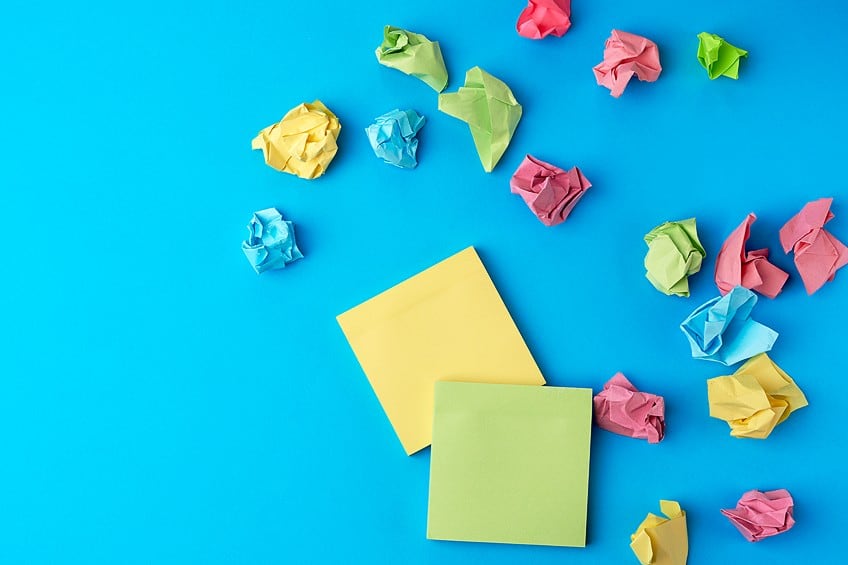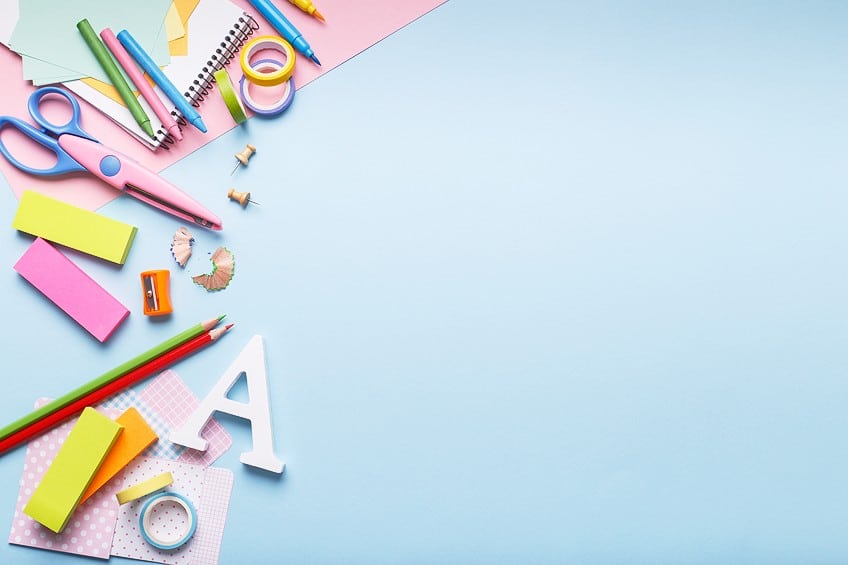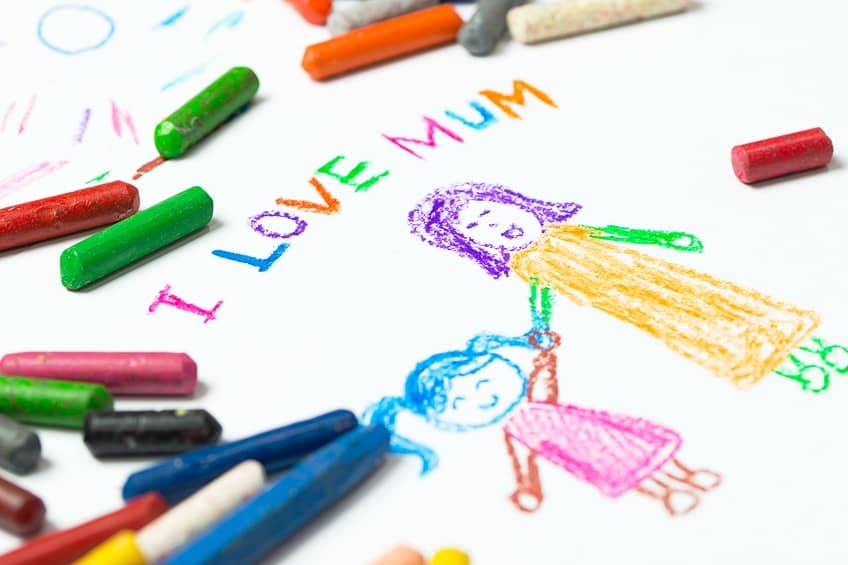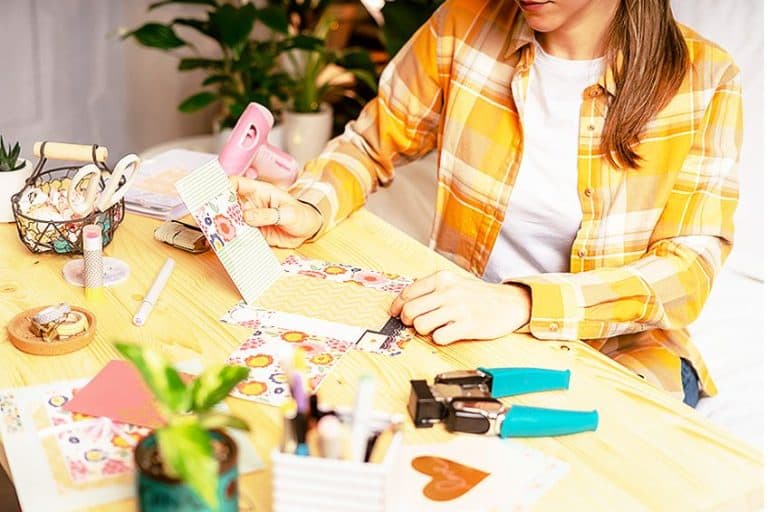What Is a Junk Journal? – Learn How to Make a Junk Journal
Not many people are familiar with the term “junk journaling”, which can be described as a way to combine mixed media art with journaling. Junk journaling has been in existence for some time, becoming popular in countries like the United States, Canada, and Australia. There are even popular groups around the world that make junk journals, and some of them are also willing to swap journals with others. So, what is junk journaling? We hope to clarify this a bit further in this article!
What Is a Junk Journal?
There is no official definition of what a junk journal is, as it does not appear in the dictionary. However, a junk journal is a handmade book that is made of recycled material, such as maps, cards, envelopes, brochures, and old newspaper cuttings, and is a way for someone to record and collect thoughts, memories, inspiration, and ideas. The covers of junk journals can be made from old book covers, or even pieces of cardboard that are painted or covered with paper or fabric. The type of recycled material that can be used for a junk journal is endless. You can use almost anything, and some people even deliberately spill coffee or tea over the pages to make them look old and used.

Junk journals are unique and will always be different from person to person, as there is not one individual that is going to collect and store the same recycled materials as you do. So, what is a junk journal? A very broad definition that everyone can understand is very similar to the junk drawer in your kitchen or bedroom, where you can find almost anything and everything.
Brief History of Junk Journaling
There has never been an exact year and day fixed to confirm when junk journaling began. However, to understand junk journaling properly, you need to first understand what scrapbooking is about, for without scrapbooking, junk journals may never have evolved. It was only in the 19th century that scrapbooking began when families started recording and collecting information about their families and using their bibles to store them. This practice continued throughout the 1800s until their Bibles could no longer hold any more information. Near the end of the 1800s, families began to stick their mementos into books like ledgers, and they soon began to use books with blank pages, and this is where scrapbooking began.
Then, in the 1820s, the camera was invented, and photos were also added to the books.
Today, scrapbooking is a very expensive art form as you need to spend a lot of money on scrapbooks as well as special paper, and this is where junk journaling emerged. Junk journals began when people rebelled against the high cost of materials and supplies to create their artwork. There was no more need for expensive scrapbook paper and stickers; instead, you could use anything for your junk journal, like old envelopes, cardboard cereal boxes, or any recycled material you have lying around.

Historians confirm that journals and diaries existed since the Middle Ages, and the first diaries were written by ladies that belonged to the royal Japanese courts, dating back to the 10th century, and were referred to as pillow books as they stored them under their pillows. It has been reported that junk journals appeared shortly after the recession of the 1940s when many people started to make scrapbooks, journals, diaries, or memory books using whatever they could lay their hands on.
This included old newspapers, seed packets, paper packets, and lots more, they also used them for drawing and writing in.
How to Make a Junk Journal
If you are feeling lost and overwhelmed and do not know how to start junk journaling, the first thing you need to do is decide on what you want to use your junk journal for. Remember, that art journals need some technical paper that can handle all the mixed media, but a diary only needs blank pages, while a junk journal can use anything from art paper to newspaper. Your junk journal is a book where anything goes, there are no rules, and it is entirely up to you. Just take a leap and start journaling, even if you make mistakes, no problem, you may even find out later that your mistakes fall into your plan and theme for your junk journal.
Supplies Needed
You may not know what to buy to start junk journaling, as some supplies are essential, while others are simply nice to have and use. However, to start with, here are some supplies that you may need to get your junk journal together.
- Pieces of cardboard
- Linen or fabric
- Scraps of paper
- Thread
- Accessories
- Scissors
- Glue stick
- Ruler
- Paper punch
- Stapler
- Binder clips
- Tape
Pieces of cardboard are ideal for the front and back covers, or why not make use of some old book covers you have lying around? Some people prefer linen or fabric to make soft covers for their journals. Gather some scraps of paper together to form the pages, which could include old music sheets, old maps, receipts, envelopes, tickets, notes, stamps, or any form of scrap paper lying around. You will need some thread for binding your journal together. Apart from the paper, you can have other sorts of accessories for decoration, like beads, seashells, lace, fabric, cereal boxes, or any other embellishment you may have to make your journal unique and special. You may find that you do not need all these supplies, and you may find that you need other supplies that are not on this list.
That is fine, your junk journal is personal and unique, and the supplies will depend on how you are going to build your journal.
Different Techniques
The technique of gluing a picture to a piece of paper is simple, but there are other techniques that you can use to make your journal unique. There are no set rules, so you can do what you feel like and see where it takes you. However, here are a few of the techniques you can apply to your junk journal.

Adding Pockets
Add some writing by inserting pockets for notes, quotes, or memories. Adding pockets to a page is a great way to give your book a special hidden element, which can be done in several ways like tags, envelopes, different sizes of folded paper open at one end, and much more.
You can use these pockets to put small trinkets that have a bearing on what you are conveying on that page.
Use Different Sizes and Shapes of Paper
Not all pieces of paper you use need to be the same shape or size, you can even layer the smaller pieces of paper on top of the bigger-sized paper, so forming multiple pockets on the same page. You can also create crazy shapes out of paper. For example, triangles and rectangles, which will add depth and interest to your journal. Do not get too involved in trimming each piece of paper, it is your journal, so do not try to be perfect, it makes things uninteresting.

Use Stamps
Do not be afraid to use stamps with different images and words in different colors. If you do not have any stamps, do not go out and buy new ones, rather use old secondhand stamps, as they add a lot more character to your journal pages. Your stamps can be old and second-hand, but your ink needs to be new and fresh, which also means you need to have some good stamp pads in different colors.
These stamp pads can also be used to add a little color to the paper edges.
Make Your Journal Personal
Your junk journal needs to be personal and unique, bringing out some of your personality in its pages and design. This means if you love something and it makes you happy, then use it to give that special and personal touch to your journal. Try not to keep certain things out of your journal because it does not make sense to everybody. If it means adding unusual images or items because it reminds you of a special time with someone, then go ahead and do it. This can be a great talking point if you intend to share your journal with others, or it can remain a secret memory for you to enjoy.

Print Out As Many Things As You Want
Do not be afraid to print out things that you found in some old, recycled material. If it fits in with your theme, then print it out and use it. You can print out photos and quotes that you found on the internet, or some websites even offer you free printable images and quotes.
How to Put Your Junk Journal Together
How to make a junk journal? Making your unique junk journal can be a lot of fun, but before you get started, you need to know the purpose of your journal. If you want to use it as a diary, then you need to have a lot of blank pages, or as an art journal, you need to have mixed media and technical paper.
Let us consider an ordinary junk journal for your own needs and enjoyment.
Choose Your Purpose or Subject
Some people just want to start with their journals and jump straight in, but they soon become overwhelmed and frustrated. Your first step should be choosing a subject or a theme like flowers, for example. This makes it a lot easier to start, as you can simply go around your garden and pick some flowers or take a snapshot of your garden layout to use, and you have begun with the first step of your journal.

Make Your Cover
It is better to use thicker paper or cardboard as a cover, which will make the journal studier. Cut the cardboard to the right size, and then you can cover it with some fabric and embellishments, or even use some paint to make it special. You can also glue some embellishments to it, or even attach two handles to it, making it easy to carry.
Collect different types of embellishments like beads, buttons, coins, stickers, and anything else that will make your journal special.
Choose a Method of Book Binding
Next, you need to establish how you are going to keep your junk journal together. Bind the journal, using a needle and thread, binding rings, gluing, or stapling. There are hundreds of methods for binding your journal pages together, but in this article, we will be focusing only on four of the more popular book-binding methods.
Sewing Method
With this method, you will be sewing your pages together with a needle and thread onto the cover material. There are a variety of sewing techniques available, but the most common method is the simple pamphlet stitch.

Ring Binder Method
This is a much easier book-binding method, especially if you are a beginner, and all you need is a few ring binders and a paper punch. Take the paper punch and punch some holes in the paper and the cover, insert the ring binders, and your journal is bound.
No Sewing or Punching Method
This may not be its official name, but it is very simple and easy, and no punching or sewing is necessary. All you need are some large rubber bands or elastic hairbands, and make sure that all your paper pages are big enough to fold in half. Take the cover you have made, and then take the elastic bands and stretch them over the spine of the book cover. All you need to do now is insert your pages between the rubber bands.
It is quick and easy, and if you want to move the pages around, just slide them out and insert them where you want them to be.
Altered Book Method
For this method, you can use any form of a book that already exists, like a notebook, or ledger, and then alter it to suit your style of junk journal. Just fill the book with whatever embellishments, scrap paper, or anything you want to use for your journal.
Collect Your Supplies, Materials, and Tools
The best thing about making your own junk journal is that a lot of the supplies can be found in your home already and there is no need to go out and buy something special. However, if you feel like doing something special, you can always buy fancy cutting scissors or a bookbinding kit. Then get all your materials together like paper, stamps, envelopes, glue, bookbinding materials, scissors, and any other supplies or embellishments you want to use. Arrange them in the order you are going to assemble your book and you are ready to go.

Assemble the Base of Your Journal
The way you do this will depend on the method you have chosen to bind your journal. If you have decided to use ring binders, then it is at this stage that you need to punch holes in your papers. Otherwise, start sewing if you decide to use that method. If you have decided to use an already existing book, then you need to do some preparation work like removing some pages if necessary or using some bookbinding tape to reinforce the spine of the book.
Filling Your Journal
This is where the real fun begins, you can now start to fill all the pages of your journal with all the different items you have collected. Make use of your imagination when it comes to the creation, layout, and design of your pages. Look for some unique items that you could use as pages, like scrapbook paper, wrapping paper, fabric, lace, old maps, paper bags, envelopes, and postcards. You can pile on as many layers as you want, the layering is what makes your journal special and interesting. When layering, you can begin with the larger materials first and then include the smaller items.
Make some pages different by adding stickers, ribbons, jewelry, or any item that is flat enough to fit into your journal.
Themes for Junk Journaling
One great way to build your junk journal is to give the journal a specific theme, where all the pages match that theme throughout the entire journal. With this in mind, you should have no problem choosing a central theme as there are hundreds of subjects for you to choose from. For each theme, you can collect different supplies that will match your theme throughout the journal. Some examples of junk journal ideas can include the following.
- Botanical
- Fairy
- Floral
- Christmas
- Easter
- Sewing
- Victorian
- A storybook theme, such as Alice in Wonderland, for example
The purpose of your junk journal will determine what type of journal you are going to make. Some people use their journals as an everyday diary where they can record their experiences of that day. Others use it as an art journal to write stories or poetry in, some use it as a planner where they can track their goals. Let us now consider a few interesting junk journal themes.
Travel Journal
A travel journal is a book where you can record your thoughts, feelings, and experiences during your travels. It captures memories of all the places you visited, the different people you met as well as the adventures you experienced. Many people also use their travel journals to plan their trips, organize information, and track expenses, like flight details, contact information, and reservations. The form of your travel journal can be a sketchbook, a notebook, or even a digital journal, which also helps when sharing your experiences with others. What can you write in your travel journal?
It is a personal record of your journey and should record any details of your journey, which can amongst others include the following.
- Record daily activities, where you went, what sights you saw, the people you met, and any activities you took part in.
- Record any observations, which could include the different landscapes, cultures, or architecture.
- Describe some of the local cuisine, for example, what was your favorite food and drink?
- Document some cultural customs and traditions.
- Write about the accommodation and the experiences you had there.
- Describe some of the local characters you met and the conversations you had with them.
- Keep track of your expenses and budget.
- Write about some of the challenges you encountered, and how you overcame them.
- Make comments on your overall impressions of the places you visited, what impressed you, what you enjoyed, and what you did not like at all.
Special Occasion Journal
Special occasions come along every year like New Year, Christmas, Easter, birthdays, Father’s Day, Mother’s Day, Valentine’s Day, Halloween, and Thanksgiving, among others. However, over the years, and as you get older, they will lose their significance as their experiences can easily be forgotten. It is a good idea to have a special journal for different occasions, and years later, you can open those journals and remember all the good times. A New Year’s journal is a very powerful tool, where you will be able to reflect over the past twelve months of the old year and give yourself new energy, enthusiasm, and an action plan for the year that lies ahead.

Personal Reflection Journal
The use of this type of journal is a very therapeutic way to reflect on certain experiences you have encountered and what impact it has had on your life. It is an ideal place to document your thoughts and write down negative as well as positive events. Keep your journal close and make regular entries. Here are some reasons for using such a journal.
- Write down the details of the experiences as they happen, and it can help to make some sense of events or what happened.
- Record your view and speculate why you think the situation is that way. Continue to observe the situation and see if you need to make some changes, you can make as many changes as you like, but be honest.
- Sometimes writing your thoughts down helps to lift the pressure and you can focus on a solution.
- It provides a wonderful opportunity to share your thoughts with others and clarify your feelings.
Seasonal Journal
You can have four journals, one for each season of the year, which can give you a seasonal reflection of the whole year. In the spring journal, you can record new beginnings and what you are grateful for. Fall is the season for introspection and reflection on the achievements of the past year, so use it as a tool for inspiration for the winter months that lie ahead. For the summer journal, life picks up as summer is a very busy time and you need to set some summer goals and record all your past summer memories. For the winter months, you can reflect on some of your childhood memories of winter, and what winter means for you now. What are your favorite winter activities, how does the colder weather affect you, and do you change your wardrobe for the winter?
Other seasonal journals could be about your daily, weekly, and monthly activities and contain your thoughts and junk journal ideas.
Some Common Journaling Mistakes
Many people have started with junk journaling, and after a very short time have given up, mainly because they feel they have made too many mistakes. Journaling is a lot different from keeping a diary as you can be more creative. Making mistakes is no problem, just come back and fix it and continue with your journey. However, here are a few common mistakes you might want to avoid.
Overloading Pages
When working on your junk journal, try not to use it as a diary where you record all the events in detail, but only record what you feel is important and how it affects you. Forcing yourself to record something every day can be very tiring and leave you exhausted instead of inspired. Decorate your journal pages wisely and try not to decorate them excessively so that you are not able to close the book with all the excessive mementos and embellishments. Another common mistake is trying to keep too many journals at one time. A journal for all occasions is good, but do not try and keep them all up to date at the same time. This will result in you becoming bogged down with too many issues to deal with all at once.
Trying to Make Your Journal Perfect
A journal is your personal and unique experience and you do not have to keep to any hard and fast rules. Try not to stress about making your journal perfect, if you have spelling mistakes or incorrect grammar it is fine, as there is no perfect way to write your journal. Write your thoughts down as they come to you no matter what the length is, do not force yourself to write more, or fill the page.
Neglecting to Use Quality Materials
We all know that we can use old materials to attach to the pages of our journals, but quality materials refer more to the type of paper you use for your pages, the glue you use to stick them in, and the binding materials you use to bind the journal. If you use inferior materials for these items, it may result in your journal falling apart, or items falling out that are not stuck down properly.
You must use good-quality materials for these major items that make up your journal.
Creating your junk journal can be a lot of fun, and you can add almost anything to it. So, do not throw away any of those old pieces of paper, or other embellishments, as they can become part of your junk journal creation. Every junk journal is a unique piece of art that can be a treasured item to be shared with family and friends.
Frequently Asked Questions
What Is the Best Glue for Junk Journaling?
Fabric glue is an ideal glue to use for your junk journal, as it works perfectly to stick any fabric or ribbon to paper or cardboard, and it can also stick paper to paper. For attaching your envelopes or pockets to your journal, double-sided tape is the best product to use.
How Do You Bind Your Junk Journal?
How to bind your junk journal is entirely up to you, but one method is to use a needle and thread. Other methods include using ring binders or just using elastic bands to hold it all together. You can use an already-existing old book you have that has already got a cover and is bound.
What Is Junk Journaling?
A journal becomes a junk journal when you create it using all types of recycled materials and other objects that you would normally throw away, which is where the junk part comes from. You can use the journal to record your thoughts, dreams, and ideas as an artwork of inspiration.
In 2005, Charlene completed her Wellness Diplomas in Therapeutic Aromatherapy and Reflexology from the International School of Reflexology and Meridian Therapy. She worked for a company offering corporate wellness programs for a couple of years, before opening up her own therapy practice. It was in 2015 that a friend, who was a digital marketer, asked her to join her company as a content creator, and this is where she found her excitement for writing.
Since joining the content writing world, she has gained a lot of experience over the years writing on a diverse selection of topics, from beauty, health, wellness, travel, and more. Due to various circumstances, she had to close her therapy practice and is now a full-time freelance writer. Being a creative person, she could not pass up the opportunity to contribute to the Art in Context team, where is was in her element, writing about a variety of art and craft topics. Contributing articles for over three years now, her knowledge in this area has grown, and she has gotten to explore her creativity and improve her research and writing skills.
Charlene Lewis has been working for artincontext.org since the relaunch in 2020. She is an experienced writer and mainly focuses on the topics of color theory, painting and drawing.
Learn more about Charlene Lewis and the Art in Context Team.
Cite this Article
Charlene, Lewis, “What Is a Junk Journal? – Learn How to Make a Junk Journal.” Art in Context. July 6, 2023. URL: https://artincontext.org/what-is-a-junk-journal/
Lewis, C. (2023, 6 July). What Is a Junk Journal? – Learn How to Make a Junk Journal. Art in Context. https://artincontext.org/what-is-a-junk-journal/
Lewis, Charlene. “What Is a Junk Journal? – Learn How to Make a Junk Journal.” Art in Context, July 6, 2023. https://artincontext.org/what-is-a-junk-journal/.









